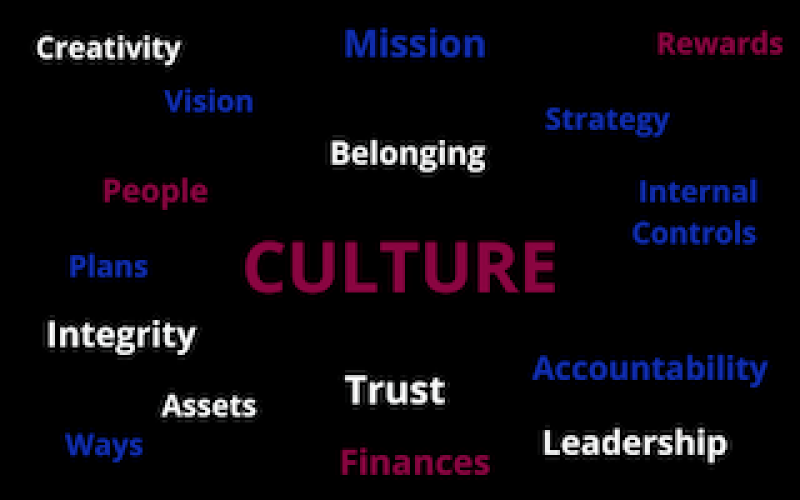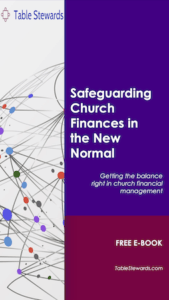Introduction
So, how do you develop a positive culture for effective church administration?
The effective administration or management of finances, assets and people is vital in all churches that want to see their missions fulfilled. However, this is easier said than done.
The environment in which church administration takes place affects the quality of the results obtained. This is impacted by the church culture.
Culture makes or breaks! Culture is perceived by everyone who comes into contact with the church.
People make their decisions on how to behave, whether they can find a sense of belonging there, or whether they can see alignment with their own values or the values they expect of a church.
The health of a church’s culture is always noticeable. The culture that a church espouses even when not documented, shows through in all its activities and interactions between people.
Culture is experienced by people, rather than notified to them.
When people feel that a church culture is misaligned with their own values, they are reluctant to commit to such an environment.
This also affects the type of people the church attracts to administer its finances and assets, and the type of results it generates.
The level of errors, fraud, internal control breaches, and non-compliance with laws and regulations, depends on the culture within which the church operates.
Developing a healthy and positive culture in churches is therefore vital.
This article take you through what culture is, why culture matters in a church environment, and the 6 steps to developing a positive culture for effective church administration.
Table Stewards uses a light-hearted scene setting approach to introduce its topics, but if you would prefer to dive straight into any part of the article, please click the relevant link in the table of contents above.
Scene Setting
It is pre-meeting time again in advance of the weekly masterclass. The members of the Learning and Development Committee have arrived to consider the topic for the masterclass with the coach.
Brother Badtrus: Why can’t people just follow procedures? I have made it clear that no online purchases will be made without a duly approved requisition, in line with our church processes. But I have just received an email asking for an urgent purchase of refreshments to be made right away!
Sister Mary: It’s because you sometimes make such purchases. How do you decide when to follow process and when to make exceptions? If you can answer that, then you have your answer!
Sister Jane: It’s not fair to blame Brother Badtrus for people who choose not to follow process!
Coach Emmanuel: I think I understand what Sister Mary is trying to say. The culture we promote drives the behaviours we see.
Brother Sam: Culture? For buying refreshments? What do you mean?
Coach Emmanuel: Do you know the best way for me to explain this? At our masterclass! Let’s get going!
What is Culture?
Culture is the way things are done in a place or environment. It is “how we do things here”. It encompasses the cultivated behaviours, beliefs, values and attitudes that are deemed acceptable by the group of people that make up the environment.
Culture is usually accepted subconsciously by a group of people with shared values, and is propagated through communication and imitation of the learned behaviours by members of the group.
Church culture is therefore the way a church behaves and does things. It can be considered to be its way of life, its “personality” or “atmosphere”.
Why Does Culture Matter in a Church?
Church culture plays a strong role in the outcome of all activities within the church – it can make or break.
The leadership of the church sets the tone for its culture.
The unspoken and unwritten messages communicated through culture can have a greater impact on how people behave than any published values that are not lived by.
Culture affects the type of people attracted to a church, how money is attracted and spent, how much people are willing to give of themselves to its mission, how members are treated, retention of members, and the reputation of the church to the outside world.
Basic core values you would expect in a church include integrity and accountability.
If a church expresses integrity and accountability as part of its core values but the leadership use the privilege of their position to override internal controls, this sends a message of “do as I say, not as I do”, to everyone else.
Human nature repels that, and some may subconsciously takes the stance that “what is good for the goose, is good for the gander”, and do likewise.
The internal control framework starts to be eroded and eventually accountability becomes just words published in a value statement, rather than a lived value.
The effects of poor internal controls begin to play out, which may include misappropriation of funds, loss of assets, inability to trace who carried out transactions, collusion, penalties for non-compliance with regulations and so on.
Peoples trust in the ability of the church to effectively manage its finances and operations is dampened, leading to low morale. People who are not comfortable in such environments, leave.
Similarly, retained members may be hesitant to devote time towards the mission of the church, give money, or support its good causes due to lack of trust and their perceived risks from poor accountability.
Such negative perception of culture results in a negative impact on membership retention as well as the income of the church, and people lose their sense of belonging.
This ultimately affects the ability of the church to successfully fulfil its mission.
How to Develop a Positive Culture within the Church
Now, let’s look at 6 steps to developing a positive culture within the church.
That is, the type of healthy culture that provides the environment required to duly safeguard and deploy church finances, assets and people towards the successful achievement of the church’s mission.
Step 1 to Developing a Positive Culture: CREATE IT.
Trust is a powerful factor in developing a positive culture, and arguably the most important.
When you show people that you trust them, you inevitably make them own their trustworthiness and be self-accountable for it.
People who feel trusted bring the best of themselves to that environment, and even when they make mistakes or fail in certain areas, they quickly own those failings and find solutions to fix them.
Trust fosters transparency and openness. This in turn generates good communication and creativity in finding solutions to fix problems.
This therefore creates an environment where issues are fixed as early as possible rather than covered up, and innovation is welcomed, hence fostering continuous improvement towards the successful achievement of goals.
An environment where mistrust prevails will see errors or failings covered up and adversarial relationships between people, breeding a toxic culture.
A toxic culture in turn, means that opportunities to fix problems are missed, innovation and creativity is suppressed, and the church is exposed to unnecessary risks, which may materialise with avoidable consequences.
This does not mean trusting people blindly.
Where the church has good internal controls in place both to guide and monitor its operations, it can and should confidently operate an environment of trust.
Leaders should let people know that they are trustworthy and that they are trusted to operate with best intentions for the church.
When things go wrong, do not blame or ‘punish’ anyone but collectively find solutions to fix the issues.
This will encourage people to surface errors, issues and risks so that solutions can be found early.
Trust breeds trust.
Trusted people also extend trust to others to ultimately create that environment of trust that everyone wants to be a part of.
People bring their best selves to bear in maintaining that positive culture, which enables the church to flourish in its mission.
According to global research commissioned by Workforce Institute at UKG, “Trusting others doesn’t only yield greater engagement directly by inspiring loyalty and affection and by contributing to others’ growth and advancement. It supports engagement indirectly by freeing you up to take a variety of other actions that build personal relationships and drive growth.”
They also concluded that “Trust makes it safe to pursue new innovations and challenge the status quo. It’s a critical element to deliver meaningful and connected experiences.”
Even when exceptions occur, such as people who betray trust, or have a track record of untrustworthiness, they can still be handled in a positive culture environment.
Untrustworthy people will stand out as exceptions and be overshadowed into exit, restraint or change, by the majority who work to maintain the positive culture of trust, supported by the other factors shown below that work with, and alongside trust, to create a positive culture.
Step 2 to Developing a Positive Culture: ARTICULATE IT.
Articulate the purpose, mission, vision and core values of the church and align your culture to them.
The core values that the church stands for and wants to promote and embed, should be clearly articulated and communicated through policies, procedures, constitutions, mandates and established channels of communication.
Leadership sets the tone for culture and should visibly live the values with integrity, leading by example and reflecting the espoused values in their decision making and communication.
Step 3 to Developing a Positive Culture: EMBED IT
Develop the systems, processes, internal controls and operations of the church around the positive culture that you want to reinforce.
For example, promoting a culture of accountability would mean that no leader, not even the founder, can override any control under any circumstance.
Internal controls are developed to support good accountability within processes and everyone complies.
Step 4 to Developing a Positive Culture: REWARD IT
Reward and recognise positive behaviours that reflect the culture you are trying to promote.
For example, through end-of-year awards in the church Christmas party, that recognises people who have lived the values.
This can be done with token gifts of Christian literature, or souvenirs such as T-shirts, mugs or wrist bands.
Where the church is promoting a culture of adherence to internal control processes, a department that had 100% compliance with the purchase-to-pay process over that year can be openly recognised and rewarded with a certificate or a token team gift.
Similarly, people who have surfaced issues and problems in processes, policies, or operations, can be openly recognised.
Doing so will encourage and embed the culture of continuous improvement.
Step 5 to Developing a Positive Culture: MONITOR IT
Make people aware of the consequences of negative behaviours that contradict the core values of the church.
When such behaviours occur, it is important to deal with them accordingly and promptly, as a deterrent to others, and to reinforce the message of values that are acceptable.
This reinforces the positive culture the church want to uphold.
Step 6 to Developing a Positive Culture: NURTURE IT
It takes time and ongoing gentle reinforcement to build a positive culture.
Bringing people along to make it happen in a nurturing environment is therefore important.
Build a sense of belonging and unity of purpose so that people see and feel that “we are in this together”, rather than a tightly controlled punitive regime.
When people see the rewards of a positive and healthy culture, and how gratifying it is to thrive in, they are encouraged to continue nurturing that culture.
Have good communication channels that ensure that everyones voices are heard.
Allow the culture to evolve as long as it does not go against the core values, have fun along the way, and assist one another in embedding the culture in a supportive environment!
Conclusion
Culture can make or break! The culture that a church promotes drives the behaviours it sees.
It is possible to build a positive culture within the church, which in turn provides a healthy environment to safeguard and deploy its finances, assets and people to successfully achieve its mission.
Building a positive, healthy and winning church culture doesn’t just happen; it takes time and effort in a nurturing environment.
It involves getting everyone playing their part, right from senior leadership who set the tone and visibly lead by example, through to the membership as active participants who identify with, and live by the church’s mission, vision, values and purpose.
Making this happen in a supportive environment, where participants choose to remain self-accountable for being trusted, and in turn trust others to uphold the positive culture, helps set the foundation for a healthy and winning culture.
Explore our other articles on good governance in church administration, why risk management is necessary in churches and charities and how internal controls help protect finances.






